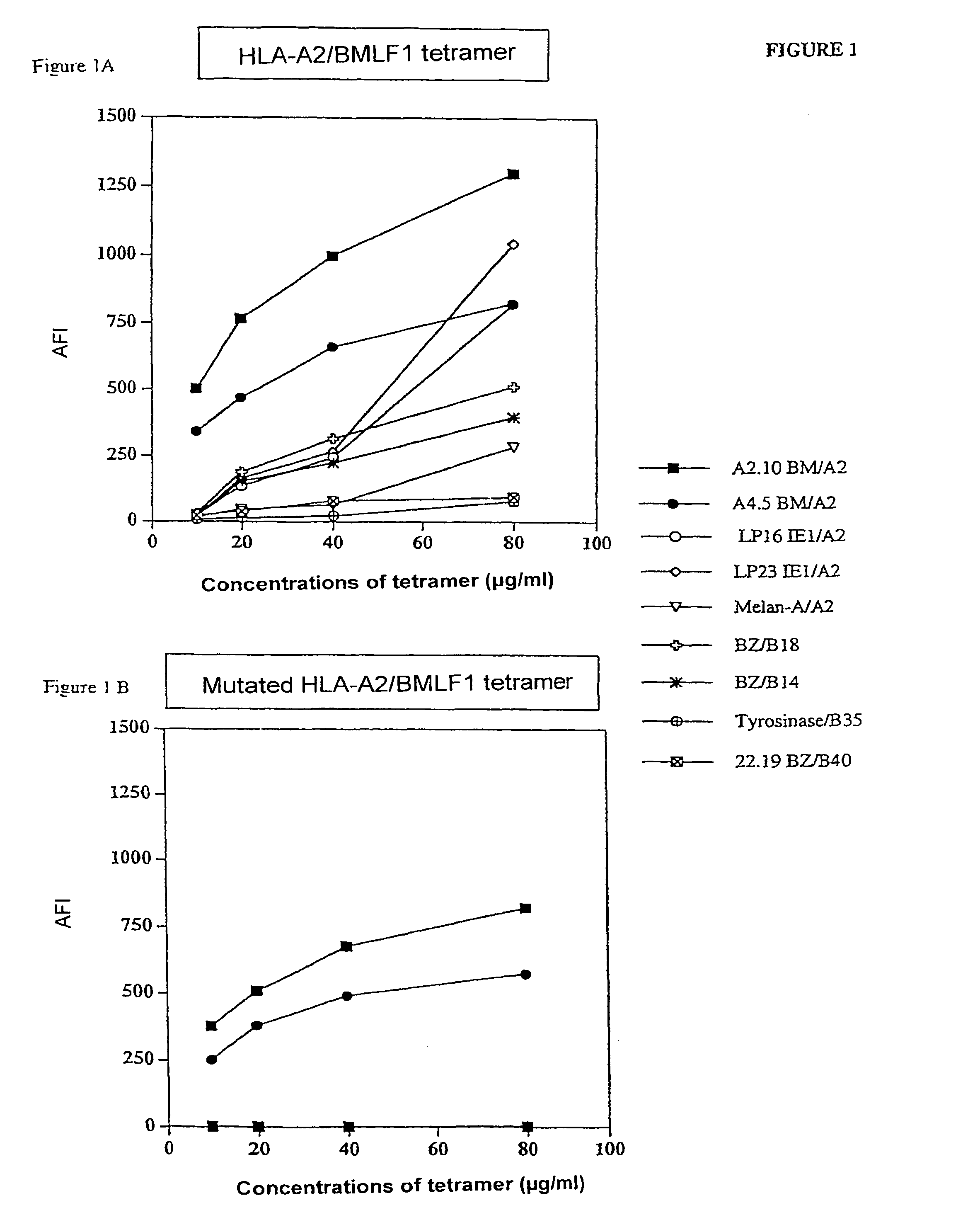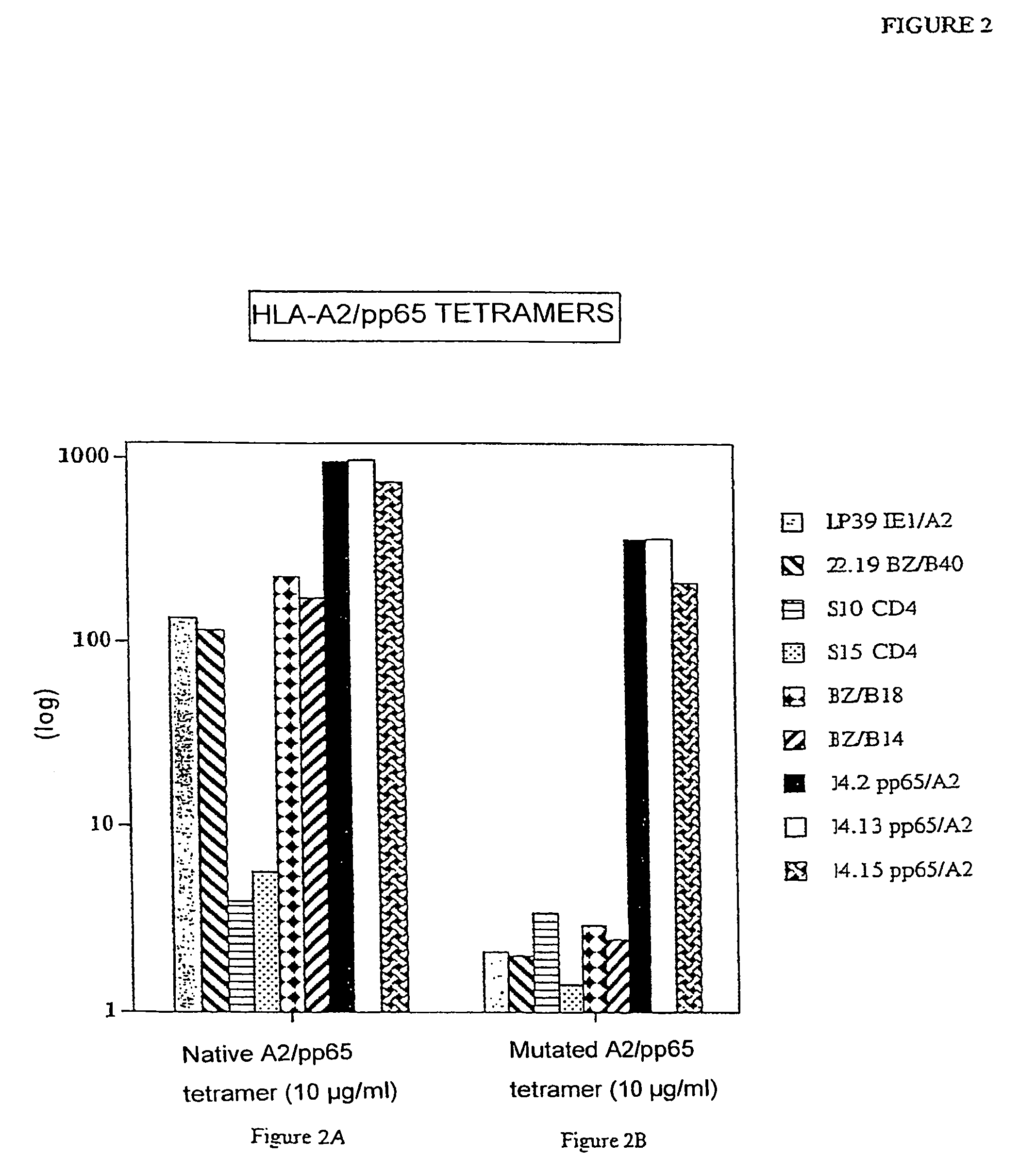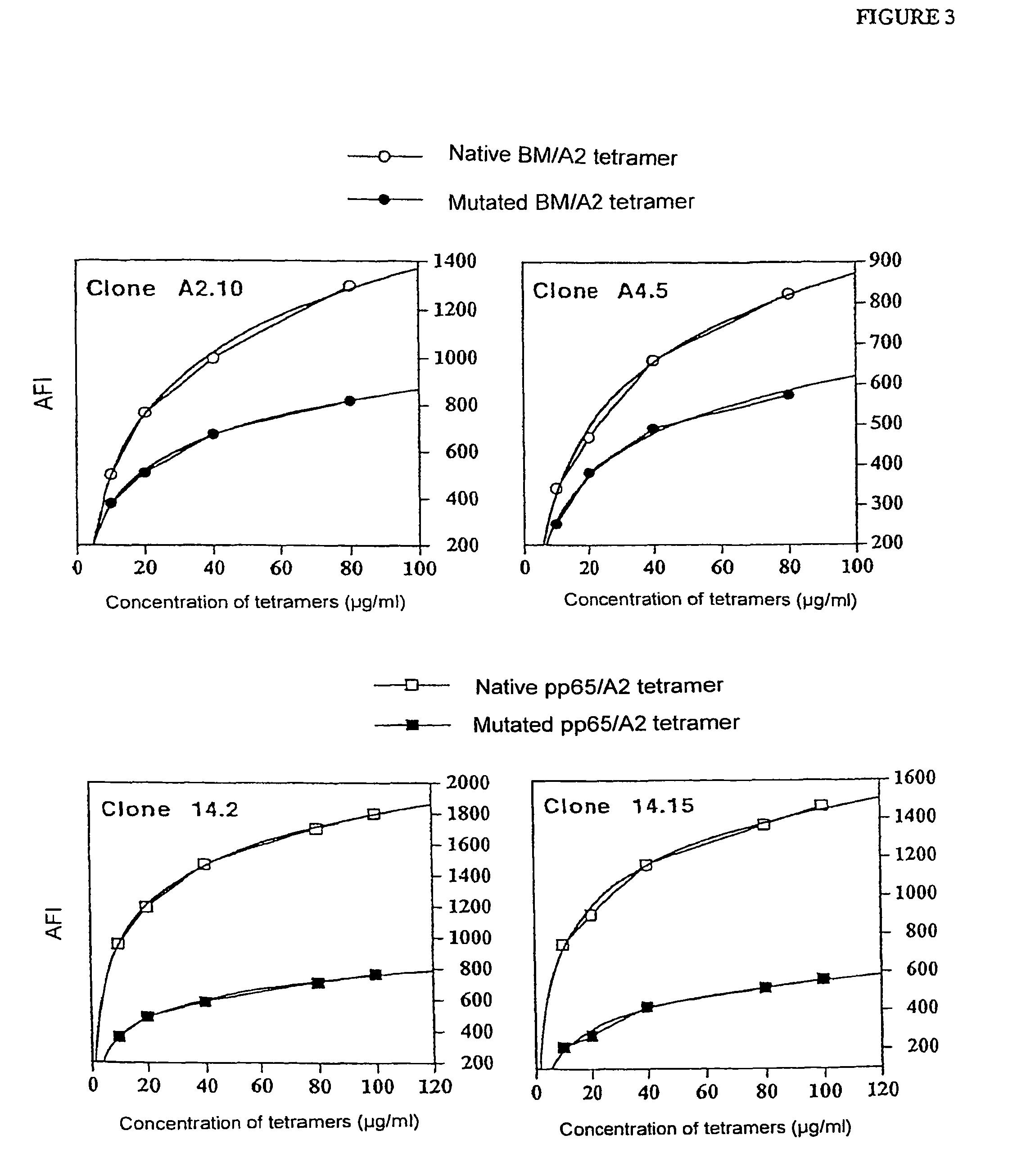Means for detection and purification of CD8+ T lymphocyte populations specific to peptides presented in the context of HLA
- Summary
- Abstract
- Description
- Claims
- Application Information
AI Technical Summary
Benefits of technology
Problems solved by technology
Method used
Image
Examples
example 1
Preparation of an HLA-A0201 Tetramer Mutated in the Zone of Interaction with the CD8 Co-receptor
[0053]A bacterial expression plasmid containing the cDNA which codes for the heavy chain of HLA-A0201, lengthened by a sequence which codes for an enzymatic biotinylation motive was used (construction according to Altman et al (1)). The zone which codes for the α3 domain had been amplified with the specific primers
[0054]
SEQ ID no. 15′ CCTTCCAGAAGTGGGTGGCTGTGGTGGTGCC 3′andSEQ ID no. 25′ GGCACCACCACAGCCACCCACTTCTGGAAGG 3′
[0055]A mutation of a base to transform the alanine codon into a valine codon was introduced into the amplification fragments using the Stratagene QuickChange Site-directed Mutagenesis R kit.
[0056]The mutated fragment was reintroduced into the expression plasmid and the presence of the mutation was checked by sequencing.
[0057]The mutated HLA-A0201 heavy chain had been produced in the bacterial inclusion body and the HLA monomer charged with peptide, and then the correspondi...
example 2
Comparative Study of the Effectiveness and Specificity of Immunofluorescent Marking Between a Native HLA-A0201 Tetramer and the Mutated HLA-A0201 Tetramer Charged with Different Peptides
[0058]1) Marking of lymphocyte clones
[0059]Native HLA-A0201 tetramers and corresponding mutated tetramers were charged either with a peptide originating from the protein BMLF1 of the EBV virus or with a peptide originating from the protein pp 65 of CMV.
[0060]The native tetramers are obtained in accordance with the technique of example 1, but without the mutation.
[0061]Specific and non-specific clones were marked and used at increasing concentrations.
[0062]FIG. 1 gives the average fluorescence intensity (AFI) obtained with the native HLA-A2 / BMLF1 tetramers (FIG. 1A) and with the corresponding mutated tetramers (FIG. 1B).
[0063]It is found that the native HLA-A2 / BM tetramer shows a background noise of binding on some non-specific clones which increases with the dose of tetramer used.
[0064]This backgroun...
example 3
Comparative Study of the Effectiveness and Specificity of Immunomagnetic Screening Carried Out with the Native HLA-A0201 Tetramer and the Mutated HLA-A0201 Tetramer Charged with the Peptide p65
[0082]Biotinylated HLV-A0201 monomers charged with peptide pp65 were bound to magnetic beads coupled to streptavidine (DYNABEADS M-280 Streptavidine, DYNAL). The lymphocyte populations used in the study originated from the synovial fluids or PBL of patients suffering from rheumatoid polyarthritis or PBL originating from healthy donors seropositive in respect of CMV.
[0083]The results of single marking with the native tetramer and the mutated tetramer on these polyclonal populations are shown in FIG. 6. With the mutated tetramer it is possible to demonstrate a low percentage of positive cells in the two samples (0.22% and 0.14%), positive cells which are virtually unidentifiable with the native tetramer.
[0084]These populations were subjected to screening with beads charged either with the native...
PUM
| Property | Measurement | Unit |
|---|---|---|
| Fraction | aaaaa | aaaaa |
| Fraction | aaaaa | aaaaa |
| Fraction | aaaaa | aaaaa |
Abstract
Description
Claims
Application Information
 Login to View More
Login to View More - R&D
- Intellectual Property
- Life Sciences
- Materials
- Tech Scout
- Unparalleled Data Quality
- Higher Quality Content
- 60% Fewer Hallucinations
Browse by: Latest US Patents, China's latest patents, Technical Efficacy Thesaurus, Application Domain, Technology Topic, Popular Technical Reports.
© 2025 PatSnap. All rights reserved.Legal|Privacy policy|Modern Slavery Act Transparency Statement|Sitemap|About US| Contact US: help@patsnap.com



